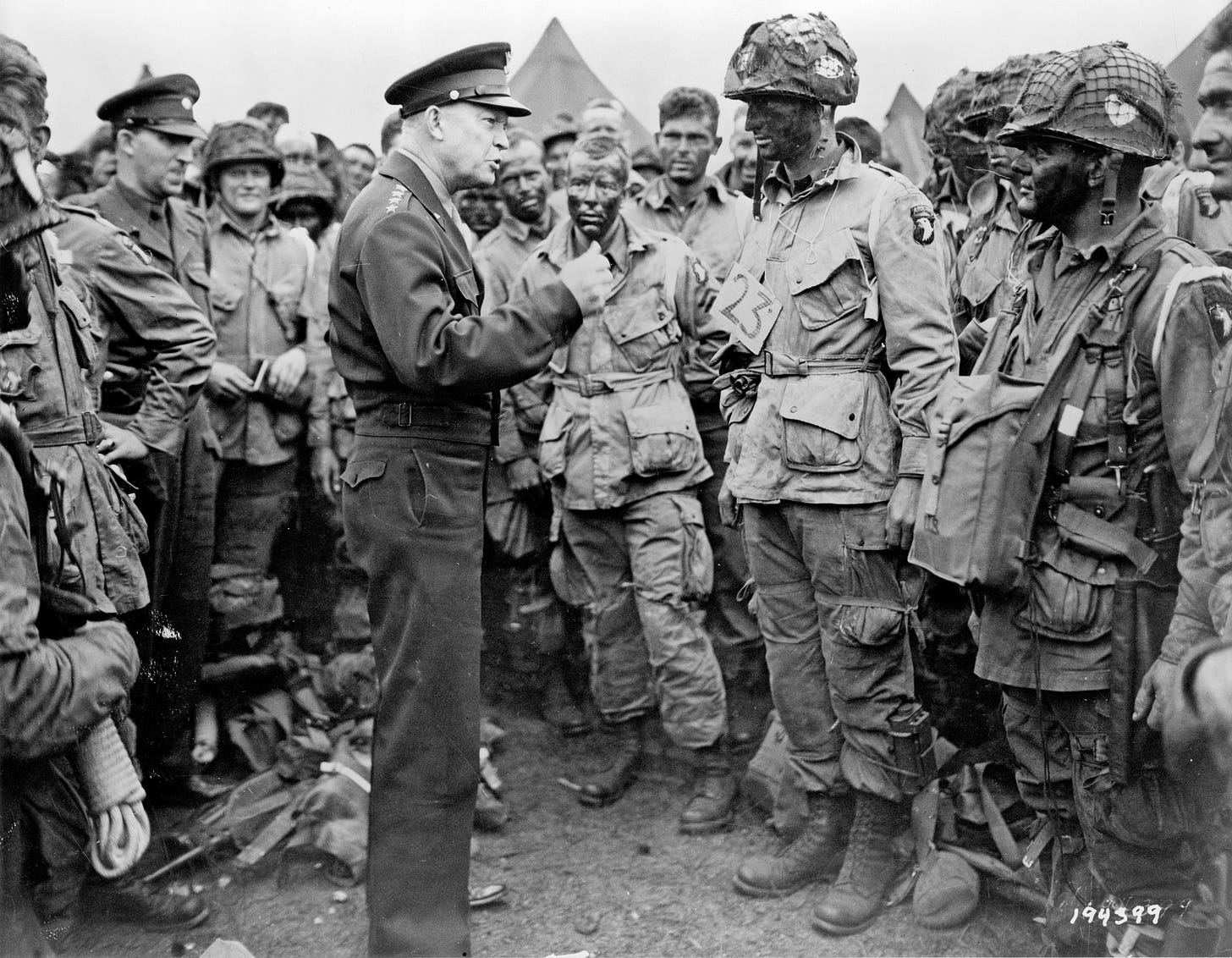What if Ike’s Staff Used AI to Plan D-Day?
On the 81st anniversary of the Normandy landings, a look at how history's most consequential weather forecast could have been transformed by artificial intelligence.

Today is June 6th. Eighty-one years ago, under slate-grey skies and on choppy seas, the largest amphibious invasion in history began. Operation Overlord was a monumental undertaking of planning, logistics, and, above all, courage. But the entire operation—the lives of thousands, the liberation of a continent, the very course of the 20th century—hinged on one of the most consequential gambles ever made: a weather forecast.
The decision to launch the D-Day invasion rested squarely on the shoulders of General Dwight D. Eisenhower. His chief meteorologist, Group Captain James Stagg of the RAF, and his American counterparts, including the pioneering (and controversial) Dr. Irving Krick, were locked in a tense debate. They were using the best technology of the 1940s: hand-drawn weather charts and a method called "historical analogues," where they manually searched for past weather patterns that resembled the current, chaotic conditions over the English Channel.
Keep reading with a 7-day free trial
Subscribe to G2 Weather Intelligence to keep reading this post and get 7 days of free access to the full post archives.

